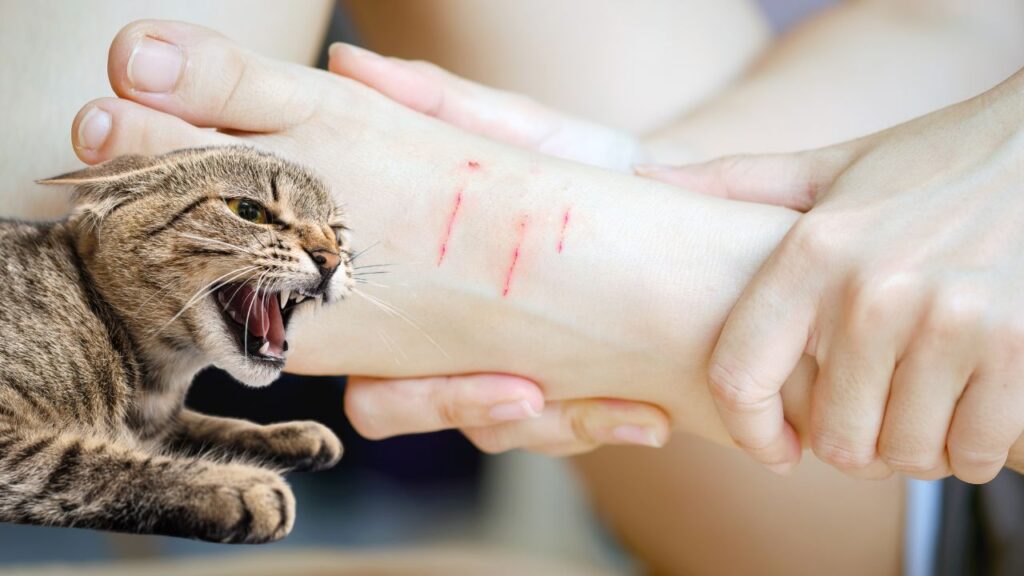Imagine this: You’re playing with your cat, and in the midst of a playful moment, you get scratched. It stings a bit, but nothing serious. But then, you start wondering—“Can I get rabies from a cat scratch?” It’s a thought that may have crossed your mind, or maybe you’re just here because you’re concerned after your own scratch.
Whatever the reason, you’re not alone in wondering whether a seemingly harmless cat scratch could lead to a dangerous viral infection. The good news? It’s highly unlikely—but there are some important things you should know.
In this detailed guide, we’re going to answer that burning question and walk you through everything you need to know about rabies, cat scratches, and your health. Buckle up for an engaging, informative, and comprehensive exploration into this topic, so you can feel at ease and confident in handling any future cat interactions.
Understanding Rabies: What Is It and How Is It Transmitted?
Before we dive into the specifics of rabies and cat scratches, it’s important to understand what rabies is and how it’s typically transmitted.
Rabies is a viral disease that affects mammals, including humans. It attacks the nervous system, leading to symptoms such as fever, confusion, agitation, and eventually paralysis. Without treatment, rabies is almost always fatal once symptoms appear. Thankfully, rabies is rare, especially in the developed world, where it’s largely under control due to pet vaccination and public health efforts.
How Does Rabies Spread?
Rabies is primarily transmitted through the saliva or nervous tissue of an infected animal. The most common way the virus spreads is through a bite, where infected saliva enters an open wound. However, the virus can also be transmitted through scratches if the infected animal’s saliva comes into contact with the scratch or an open wound.
But here’s the key point: Rabies is NOT typically transmitted through scratches unless saliva from an infected animal enters the body. In other words, a cat scratching you is not enough to transmit rabies—unless there’s an open wound on your skin where infected saliva could potentially enter.
Can You Get Rabies from a Cat Scratch? The Truth Behind It
Now, let’s focus on your specific question—Can I get rabies from a cat scratch? The answer is generally no—but there are some important exceptions. Here’s why:
- Domestic Cats and Rabies: Rabies in domestic cats is very rare. In the U.S., rabies is most commonly found in wildlife like bats, raccoons, and skunks. Domestic cats that are kept indoors and vaccinated regularly are at an extremely low risk of contracting rabies.
- Infected Cats: While rare, outdoor or stray cats may contract rabies if they come into contact with wild animals carrying the virus. However, it’s important to note that rabies is usually fatal in animals within days to weeks after infection, and infected cats will show clear symptoms such as aggression, foaming at the mouth, or paralysis.
- The Likelihood of Rabies Transmission via Scratches: For you to catch rabies from a cat scratch, there would need to be direct contact between the cat’s saliva (which contains the virus) and an open wound on your skin. This is an extremely rare situation, and most scratches from healthy, vaccinated cats do not pose any significant risk.
Rabies in Cats: What You Should Know
If you’re a cat owner—or you interact with outdoor cats—you may be wondering how to tell if a cat might have rabies, and what steps you should take in case of a bite or scratch. Here’s a quick breakdown:

Symptoms of Rabies in Cats
Rabies can affect cats in different ways, but there are a few classic symptoms to watch out for:
- Aggressive behavior: A previously calm and friendly cat might become unusually aggressive, attacking without provocation.
- Foaming at the mouth: As the virus affects the cat’s nervous system, it can cause excess drooling or foaming at the mouth.
- Difficulty swallowing: Cats may have trouble swallowing, and their voices might sound hoarse.
- Paralysis: Rabies can cause paralysis, particularly in the hind legs, leading to difficulty walking or standing.
- Sudden change in behavior: Cats may also exhibit extreme lethargy, confusion, or even uncharacteristic calmness.
If you encounter a cat displaying these symptoms—especially a cat that is acting aggressively—it’s important to stay away and contact local animal control or a wildlife authority for guidance.
What to Do If a Cat Scratches You
If you’ve been scratched by a cat and are worried about rabies, here’s what you should do:
- Clean the Scratch Immediately: Wash the scratch thoroughly with soap and water. This is the most effective way to prevent infections, including rabies, since it helps flush out any potential virus.
- Check the Cat’s Vaccination Status: If the cat is your own or a pet you know well, check whether it’s up-to-date on rabies vaccinations. If you’re unsure about the cat’s vaccination status, or if the cat was acting strangely, take the next steps.
- Contact a Healthcare Professional: If you suspect the cat might have been rabid or if the scratch was deep and involved saliva, contact your doctor or visit the emergency room. They will assess your risk and may recommend a rabies post-exposure prophylaxis (PEP) treatment, which is a series of shots given to prevent the disease from developing.
- Report the Incident: If the cat is a stray or you can’t confirm its vaccination status, it’s important to report the incident to your local health authorities. They may recommend quarantining the cat (if it can be found) or starting treatment to prevent rabies.
Factors That Increase the Risk of Rabies Transmission
Although it’s rare for a cat scratch to transmit rabies, there are factors that could increase your risk:
- The Cat’s Health: If the cat is showing signs of rabies, such as aggression, foaming at the mouth, or other neurological symptoms, this is a serious concern. In this case, seek medical attention immediately.
- The Nature of the Scratch: If the scratch is deep or involves a significant open wound where the cat’s saliva could enter, the risk may be higher than a superficial scratch.
- The Cat’s Vaccination Status: Cats that are unvaccinated or not up-to-date on rabies vaccinations pose a higher risk. Stray cats are more likely to contract rabies since they’re more likely to interact with wildlife.
How Rabies is Prevented in Cats
The most effective way to prevent rabies in cats is through vaccination. Here’s what you should know:
- Vaccinate Your Cat: Ensure that your cat is vaccinated against rabies, as this is a legal requirement in many areas and an important step in protecting both your cat and yourself.
- Limit Exposure to Wild Animals: Keep your cat indoors or monitor them closely when they’re outdoors to reduce the risk of exposure to rabid animals.
- Monitor Your Cat’s Health: If your cat starts acting strangely, particularly if it has been exposed to wildlife, seek veterinary help immediately.
Table 1: Rabies Risk by Animal Type
| Animal Type | Risk of Rabies Transmission | Common Transmission Route |
|---|---|---|
| Domestic Cats | Very low if vaccinated | Bites, scratches, or saliva contact |
| Stray/Outdoor Cats | Low to moderate | Bites, scratches, or saliva contact |
| Wild Animals (Bats, Raccoons) | High | Bites, saliva contact |
| Dogs (Vaccinated) | Very low | Bites, saliva contact |

What to Do If You’re Worried About Rabies After a Scratch
Let’s say you’re still concerned about that cat scratch and you’re not sure what to do next. Here’s a quick checklist to help you assess the situation:
- Step 1: Was the cat acting abnormally (aggressive, foaming at the mouth, etc.)?
- Step 2: Is the cat vaccinated against rabies?
- Step 3: Was the scratch deep or did it involve saliva entering an open wound?
- Step 4: Seek medical advice if you’re unsure, especially if the cat was unvaccinated or showed abnormal behavior.
Conclusion: Should You Be Concerned?
In short: Getting rabies from a cat scratch is extremely unlikely, especially if the cat is healthy and vaccinated. While it’s understandable to be cautious, the risk is minimal. If you’re scratched by a cat and you’re unsure about the situation, it’s always best to err on the side of caution and contact a healthcare provider. They can help you assess the risk and provide the necessary treatment if needed.
Remember, rabies is preventable, and most cat scratches are harmless. By keeping your cats vaccinated and following good hygiene practices, you can significantly reduce the chances of any health issues arising from a simple scratch.
Stay safe, and give your cat a cuddle from me!

